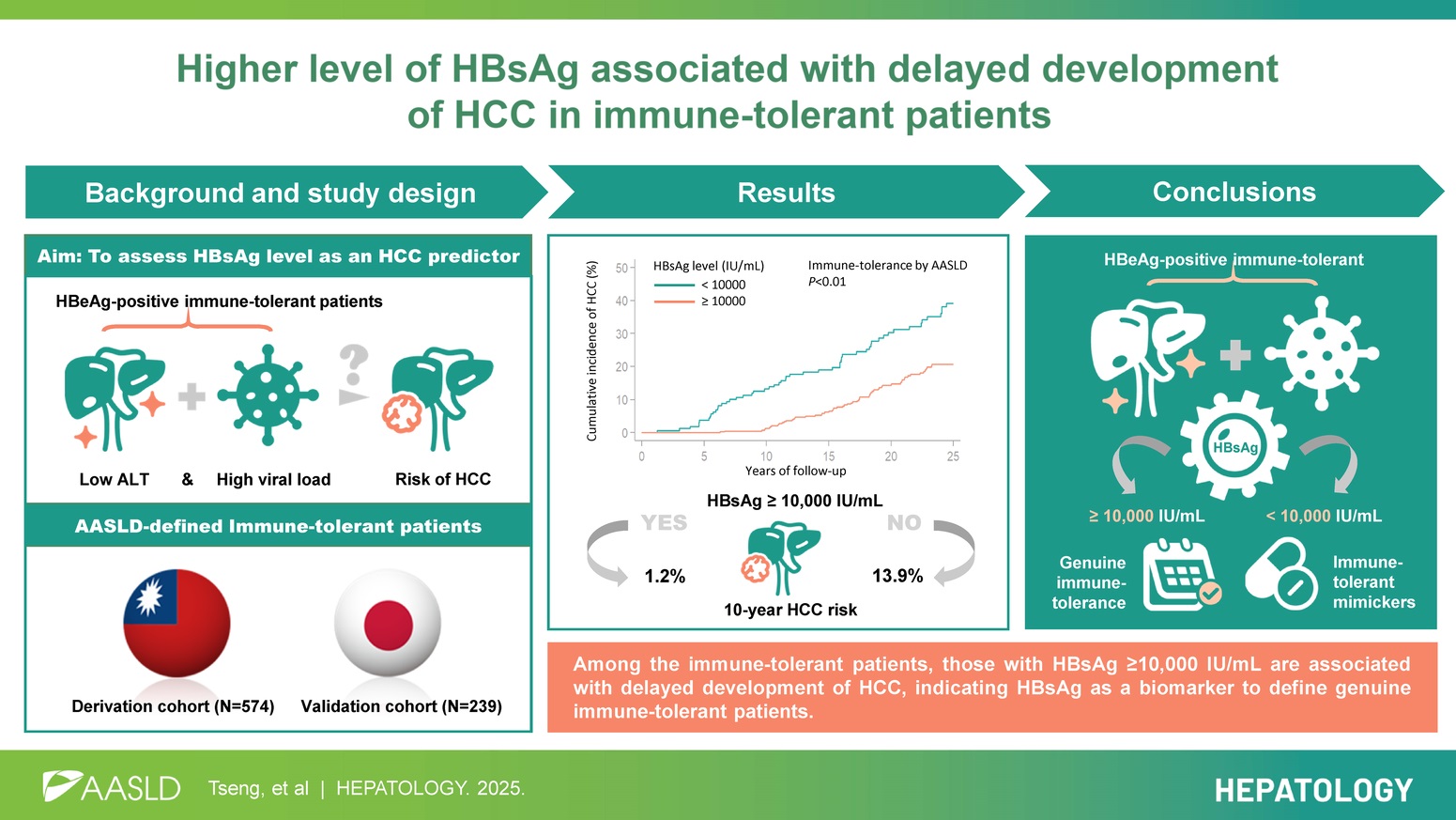
Chien-Jen Chen, Hwai-I Yang
Hepatology
March 25, 2025
Background and Aims:
Active viral replication in patients with chronic HBV infection is a major risk factor for HCC. However, the HCC risk in highly viremic patients, such as immune-tolerant patients, remains unclear. This study aimed to investigate the relationship between viral factors and HCC risk in patients with chronic HBV infection, focusing on immune-tolerant patients.
Approach and Results:
A total of 6139 non-cirrhotic Taiwanese patients with chronic HBV infection were enrolled, comprising 2666 patients from the ERADICATE-B study and 3473 patients from the REVEAL-HBV study. The primary endpoint was HCC development. The relationships between viral factors and HCC risk in HBeAg-positive and HBeAg-negative patients were analyzed separately. Over a median 21.7-year follow-up, 547 patients developed HCC. The relationship between viral factors and HCC risk varied depending on HBeAg status. HCC risk increased with viral load and plateaued at ≥5 log10 IU/mL in HBeAg-negative patients while showing limited correlation in HBeAg-positive patients. Conversely, HBsAg levels were positively associated with HCC risk in HBeAg-negative patients but negatively associated in HBeAg-positive patients. Further investigation focusing on HBeAg-positive immune-tolerant patients showed that HBsAg levels ≥10,000 IU/mL (vs. <10,000 IU/mL) were associated with delayed HCC development, which was validated both internally through various subgroup analyses and externally by an independent Japanese cohort.
Conclusions:
Predictive roles of HBV DNA and HBsAg levels in HCC development differ between HBeAg-negative and HBeAg-positive patients. Particularly, among immune-tolerant patients, HBsAg levels ≥10,000 IU/mL showed delayed development of HCC, suggesting HBsAg as a biomarker to define genuine immune-tolerant patients.


